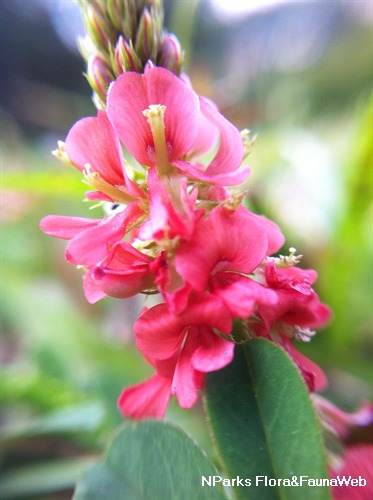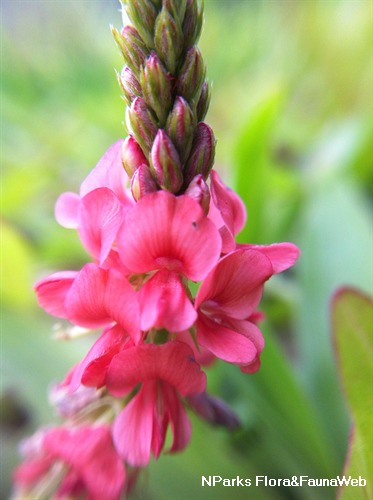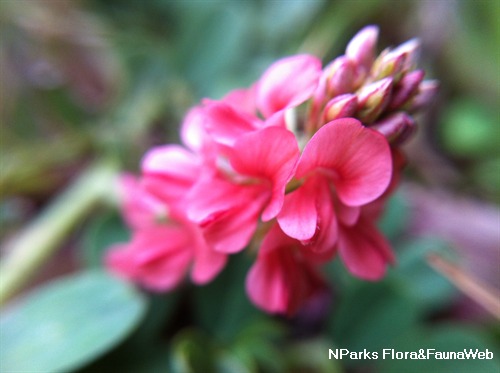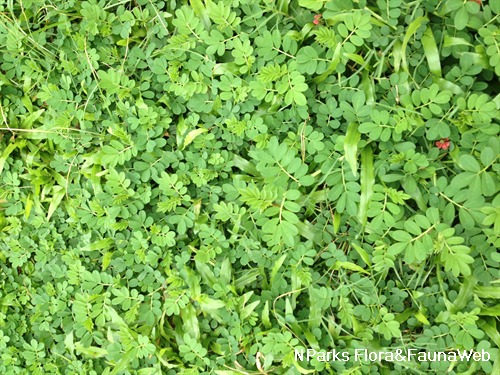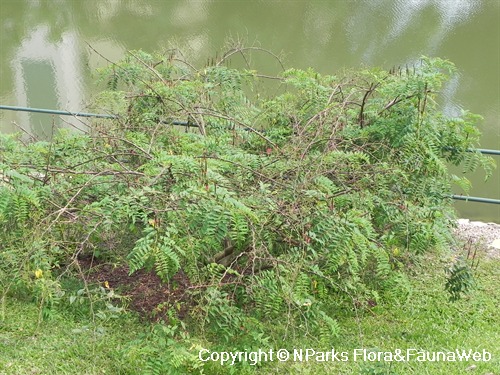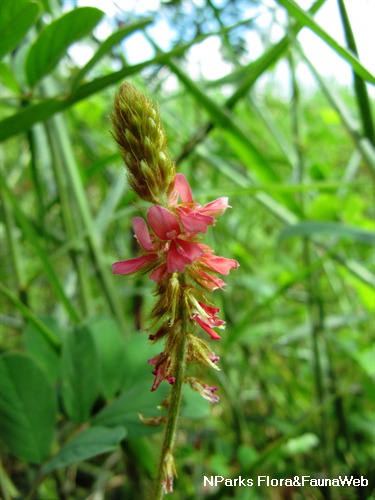
Back
Indigofera spicata Forssk.
| Family Name: | Fabaceae (Leguminosae) |
| Synonyms: | Indigofera endecaphylla, Indigofera hendecaphylla |
| Common Name: | Creeping Indigo, Trailing Indigo, Lawn Indigo |
Name
Classifications and Characteristics
| Plant Division | Angiosperms (Flowering Seed Plants) (Dicotyledon) |
|---|---|
| Plant Growth Form | Shrub |
| Lifespan (in Singapore) | Perennial |
| Mode of Nutrition | Autotrophic |
| Plant Shape | Open |
| Maximum Height | 0.5 m |
| Maximum Plant Spread / Crown Width | 1 m |
Biogeography
| Native Distribution | Africa, Madagascar, Mauritius, Yemen |
|---|---|
| Native Habitat | Terrestrial (Disturbed Area / Open Ground) |
| Local Conservation Status | Non-native (Spontaneous (Naturalised)) |
Description and Ethnobotany
| Growth Form | Perennial creeping herb. |
|---|---|
| Foliage | Pinnately compound leaves are usually composed of 5-7 obovate to elliptic leaflets. |
| Stems | Young stems are initially flattened and then become ridged. |
| Flowers | Pink to orange-red flowers are arranged in a raceme (spike-like inflorescence with stalked flowers). |
| Fruit | Yellowish and brown pods are smooth, cylindrical and hang downwards (1-1.8 cm long, 1.5-2 mm wide). |
| Ethnobotanical Uses | Others: This species is planted to prevent weeds from growing in plantations. It also adds nutrients to the soil through its symbiotic relationship with nitrogen-fixing bacteria and helps to stabilize the soil against erosion. Some strains contain toxic chemicals that can induce abortion in cattle. |
Plant Care and Propagation
| Light Preference | Full Sun |
|---|---|
| Water Preference | Moderate Water |
| Maintenance Requirements | Low |
| Propagation Method | Seed |
Foliar
| Mature Foliage Colour(s) | Green |
|---|---|
| Mature Foliage Texture(s) | Smooth |
| Foliar Type | Compound (Odd-Pinnate) |
| Foliar Arrangement Along Stem | Alternate |
| Foliar Attachment to Stem | Petiolate |
| Foliar Shape(s) | Non-Palm Foliage (Obovate) |
| Foliar Venation | Pinnate / Net |
| Foliar Margin | Entire |
| Foliar Apex - Tip | Acute, Rounded |
Floral (Angiosperm)
| Flower & Plant Sexuality | Bisexual Flowers |
| Flower Colour(s) | Pink |
|---|---|
| Flower Grouping | Cluster / Inflorescence |
| Individual Flower Shape | Papilionaceous / Pea-shaped |
| Inflorescence Type | Raceme |
| Flowering Habit | Polycarpic |
| Flower Colour(s) Remarks | Orange-red |
Fruit, Seed and Spore
| Mature Fruit Colour(s) | Brown, Yellow / Golden |
|---|---|
| Mature Fruit Texture(s) | Smooth |
| Fruit Classification | Simple Fruit |
| Fruit Type | |
| Seed Quantity Per Fruit | Few (1-5), Moderate (6-10) |
References
| References |
|---|
Image Repository
Others
| Master ID | 31570 |
|---|---|
| Species ID | 5969 |
| Flora Disclaimer | The information in this website has been compiled from reliable sources, such as reference works on medicinal plants. It is not a substitute for medical advice or treatment and NParks does not purport to provide any medical advice. Readers should always consult his/her physician before using or consuming a plant for medicinal purposes. |

